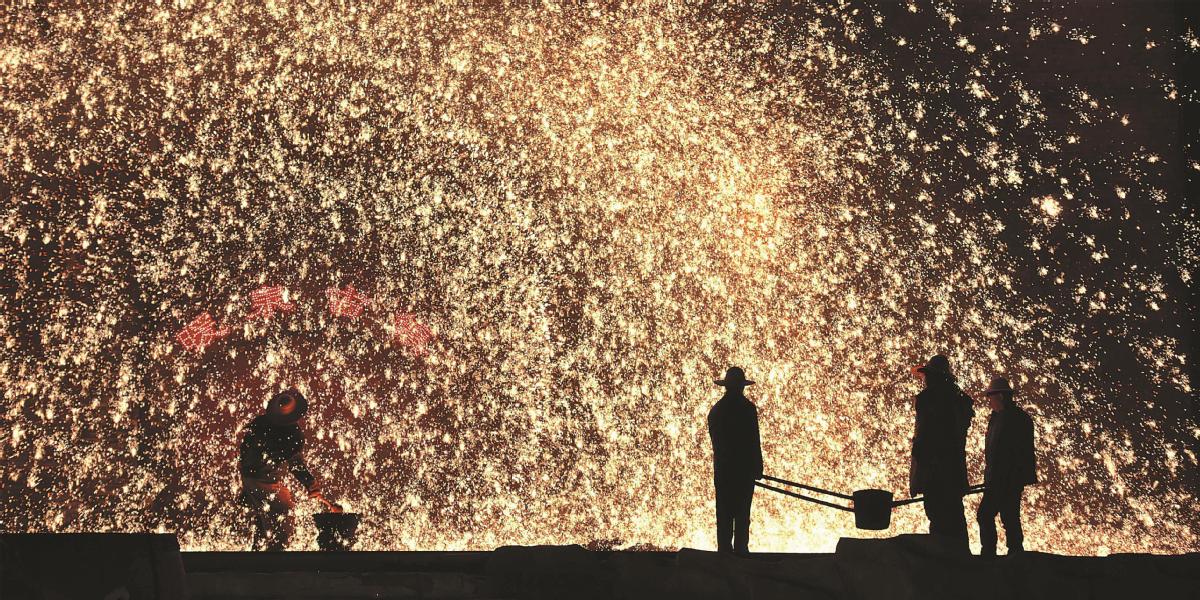
Editor's Note: Beijing is co-hosting the 2022 Winter Olympics and Paralympics with Zhangjiakou in Hebei province. From culture and cuisine to tourism and the arts, we take you to the attractions in these areas of North China for an unforgettable stay.
For many Chinese revelers, Lantern Festival, which fell on Feb 15 this year, marks an exuberant end to two weeks of Lunar New Year festivities.
For folk artist Wang De, it is also the busiest, best time for him to show off his signature craft-creating molten iron fireworks.
Wang, who is a blacksmith by trade and an exponent of the 500-year-old art of dashuhua, which literally means "creating tree flowers", lives in Yuxian county in the city of Zhangjiakou, North China's Hebei province.
To create molten iron fireworks, scrap iron is melted to 1,600 C and thrown against a cold wall to blinding effect.
Wang, 58, and his assistants put on over a dozen dashuhua performances for villagers and tourists as part of Spring Festival celebrations each year.
The folk artist hopes the revival of the tradition can bring more visitors to his hometown of Zhangjiakou, which entered the international spotlight following its successful bid to co-host with Beijing the 2022 Olympic Winter Games.
Dashuhua is a traditional form of fireworks performance that takes place during certain festivals.
Using special scoops made from willow roots, the performers, who are dressed in sheepskin coats and bamboo hats, throw the molten iron at city walls.
The mix bursts into sparks that look like glittering tree branches.
In ancient times, blacksmiths performed dashuhua to simulate actual fireworks-a luxury that only the most prominent townspeople could normally afford.
There are only four people left in China who have mastered the ancient practice, and three of them are either middle-aged or elderly, according to local media reports.
Due to the nature of the performance-handling superheated coal and molten iron-it's easy for performers to sustain injuries.
In 2016, the BBC documentary Chinese New Year: The Biggest Celebration on Earth carried shots of the spectacular "canopy of flowers made from flying shards of molten metal".
During a performance, Wang wears a straw hat and a thick sheepskin coat to protect him from the heat. He holds a willow scoop in his hand, walks up to the furnace near the wall, dips in the scoop and slings the molten iron at the wall to produce the dazzling display.
